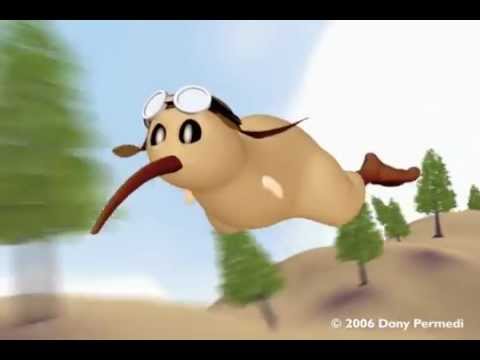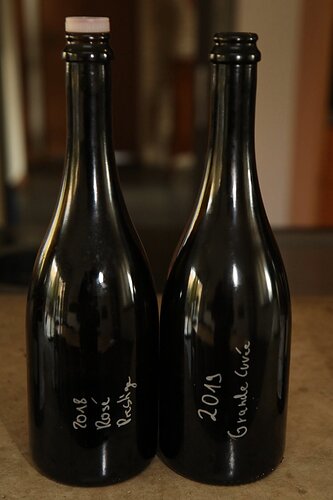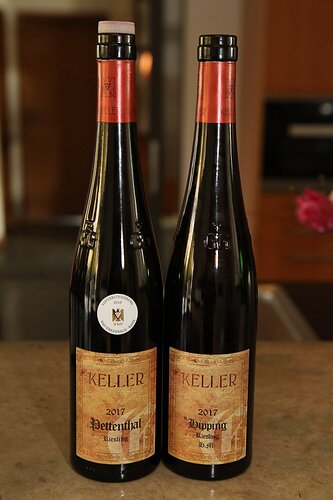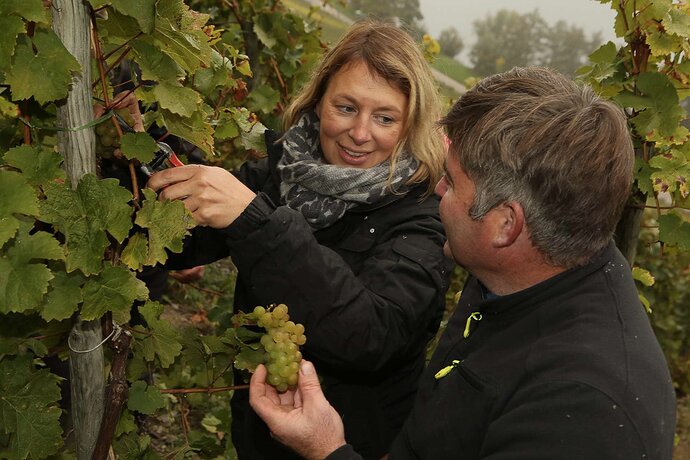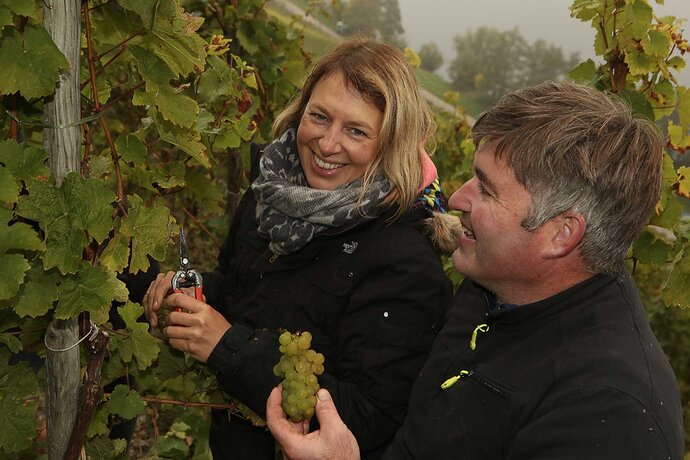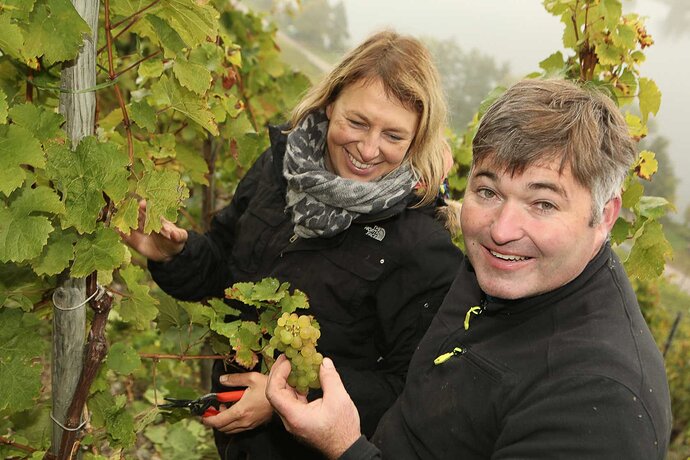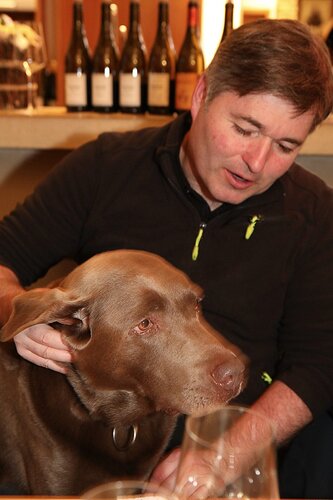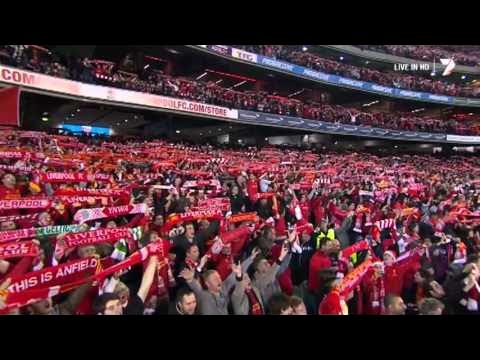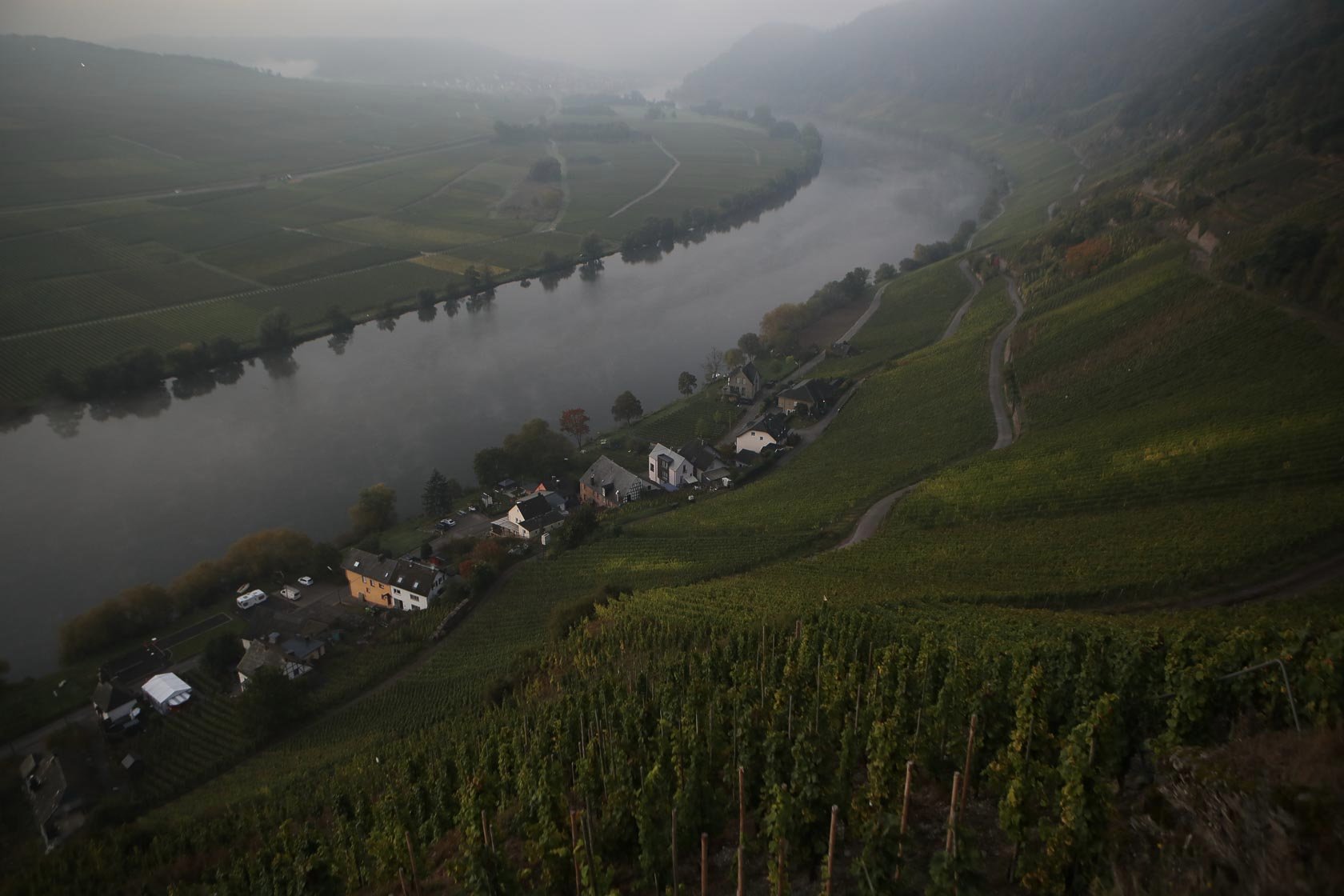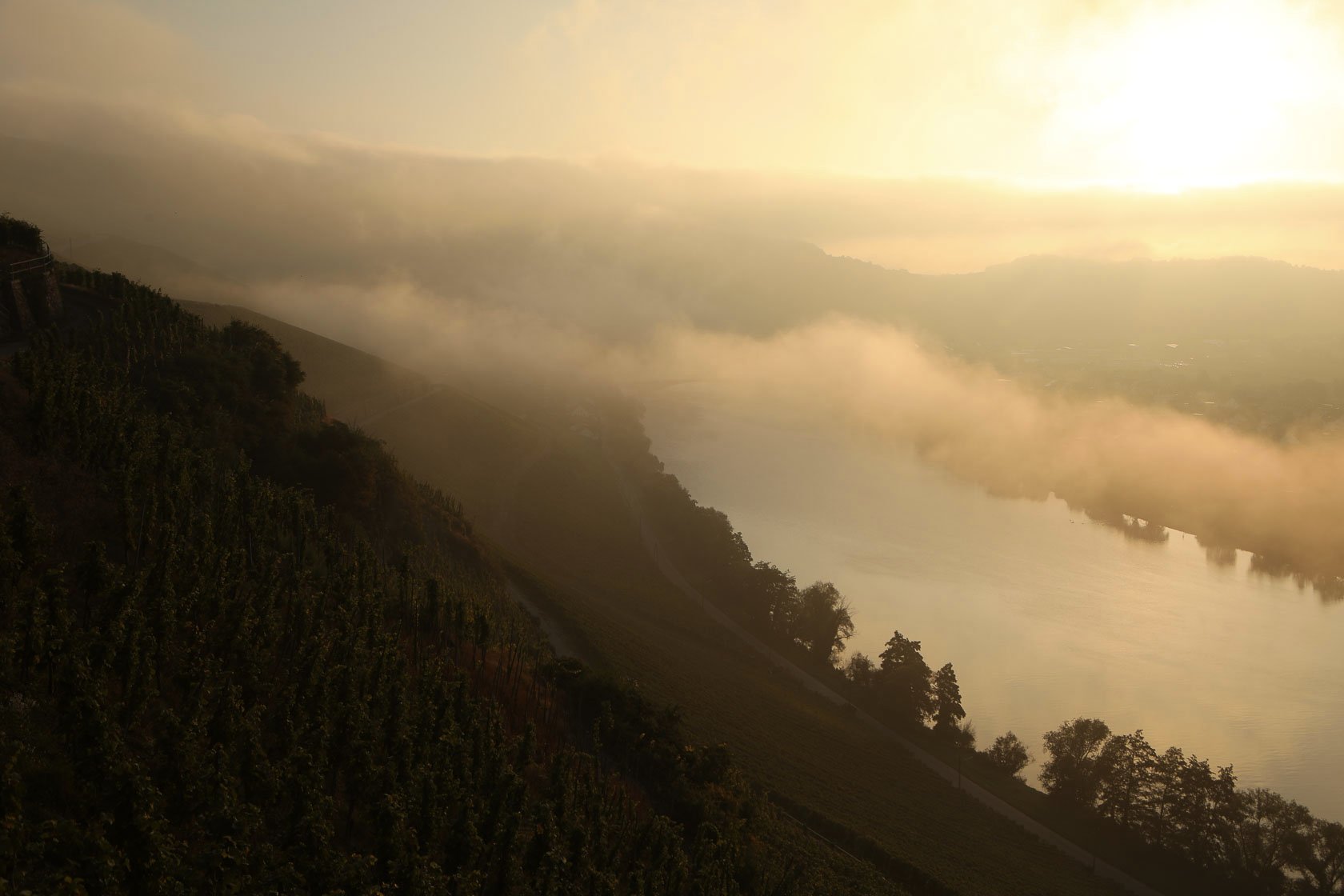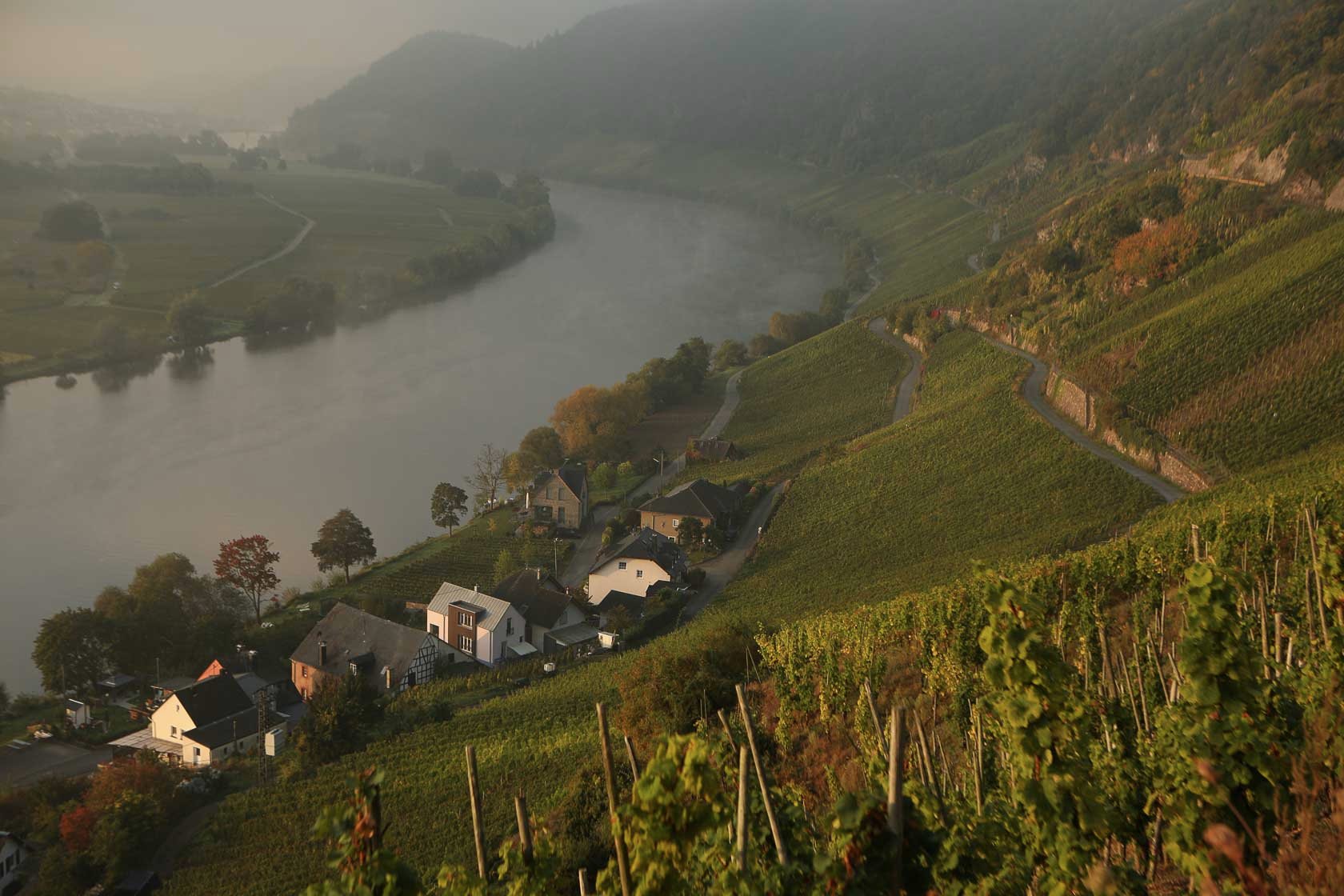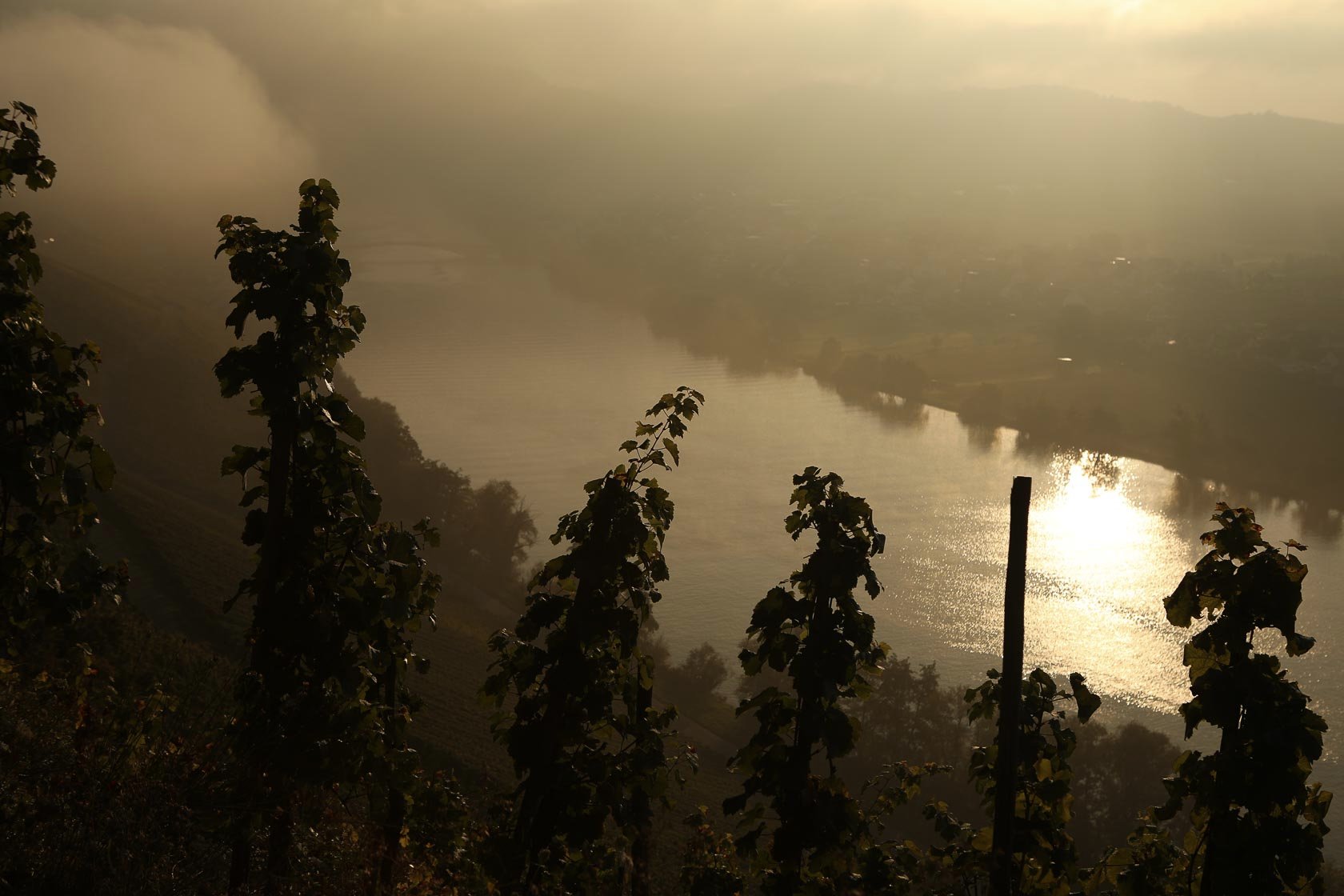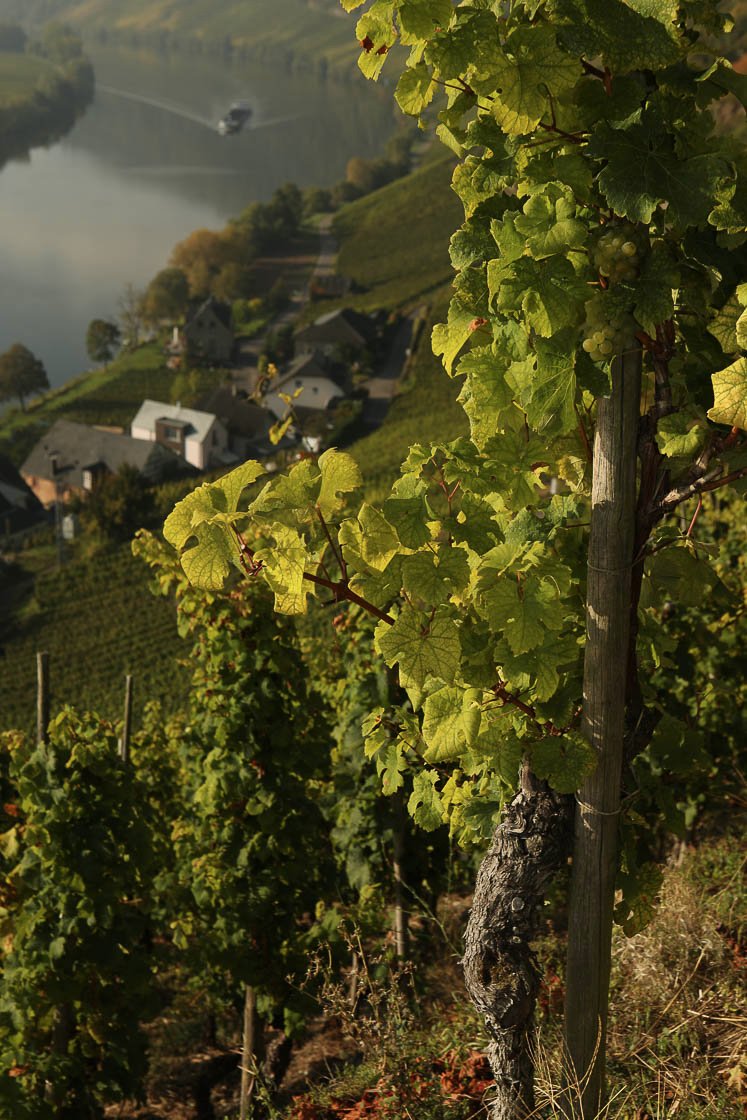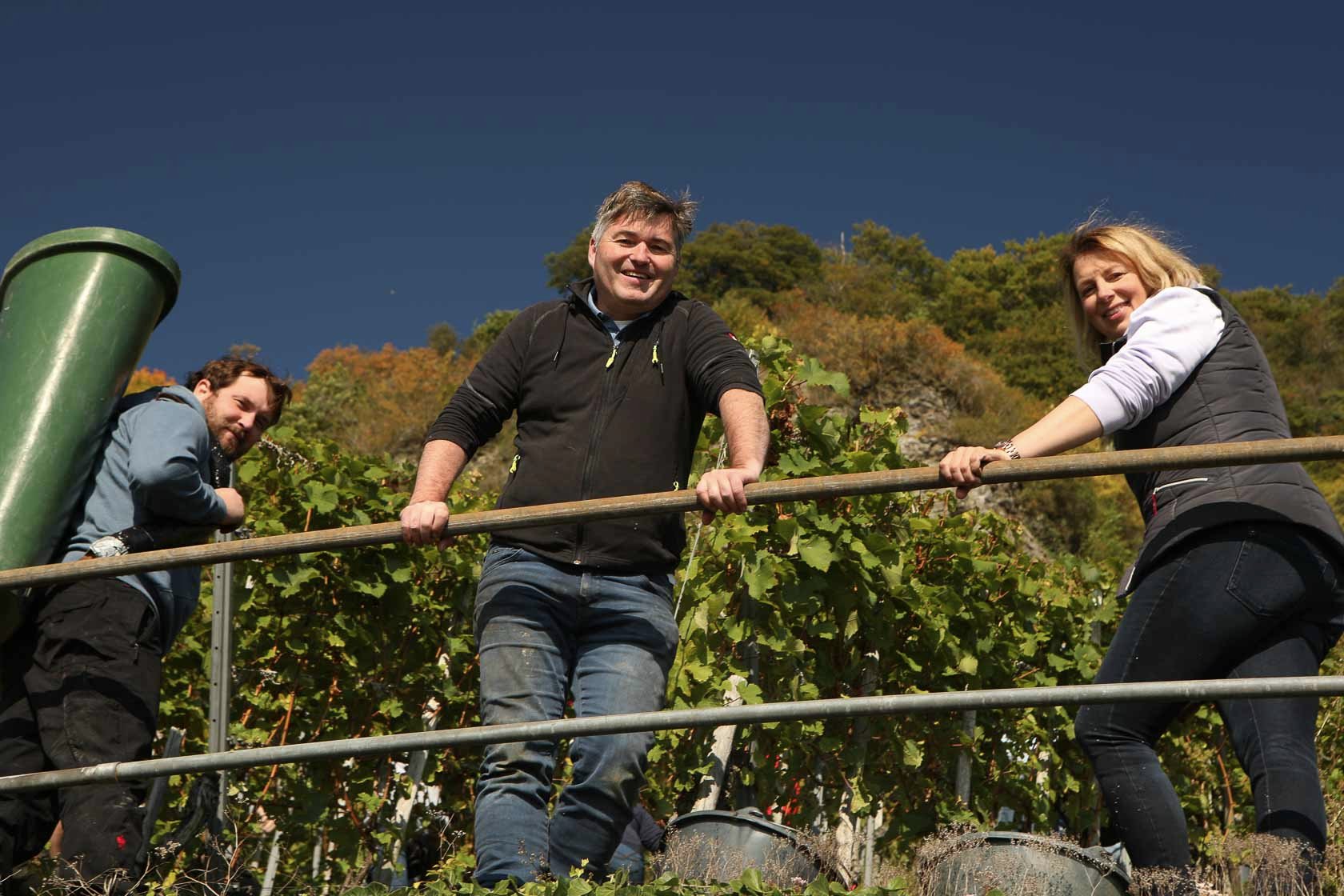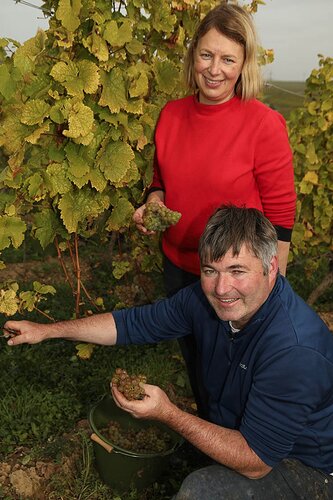Part I.
Hi folks!
I thought I’d add my 2 cents to the new 2021 vintage in Germany given that it seems to be such a special vintage that we won’t see too often. My apologies to those with little time at their disposal - for you, I would suggest just reading the headline and try finding as many 2021s as you can afford and make your own empirical studies - I know I will! Riesling Kabinett in particular was terrific in 2021, perhaps better than it has been for many years, because the late vintage, the good water supply to the vines, the moderate sugar content, the cool nights and the racy acidity, it was in one word: Perfect. For the remaining poor, old sods with no real life other than reading nerdy impressions on wine from another fellow wine nerd, I offer you my first glance of the new vintage in Germany through the lens of Weingut Keller. It will be followed by impressions from my recent visits in March and April to Krüger-Rumpf, Dr Crusius, Joh Baptist Schaefer, Schlossgut Diel, Dönnhoff, Emrich-Schönleber, Peter Lauer, Zilliken, Egon Müller, Julian Haart, Weingut Haart, Fritz Haag, Schloss Lieser, Willi Schaefer, Dr Loosen, Joh Jos Prüm and also impressions from VDP’s fabulous Mainzer Weinbörse. So hopefully a little something for everyone’s taste… ![]()
The 2021 vintage - THANK YOU, mildew!
You might wonder about the headline. Is mildew really something to be grateful for? After all, it’s a nuisance that threatens entire crops, it’s spreads like wildfire among the vines and it’s often associated with rain and unfavourable conditions in the vineyard. Yet…a ”thank you”? Yes. Indeed. Actually, when thinking about it, why not thank the entire vintage with its mildew with a song? A music video that comes to mind, is THANK U by Alanis Morissette. We all need a little music in this gloomy world today.
So…THANK YOU. I’m grateful! In fact, I’ll go out on a limb here and claim that mildew is the very core reason, together with picture perfect harvest conditions, why the 2021 vintage, which could have become a very troublesome year, produced some of the most breath-taking wines I’ve ever had the pleasure to taste in my lifetime. Don’t believe me? Well, at least remember where you heard it first, so that you know where to go back reading about it when you’ll be crying you don’t have more 2021s in your cellar. I, for one, thank mildew - and the hard-working winemakers - for the opportunity to taste some truly mindboggling, world-class wines. B) Having said that, it’s quite interesting to see how professional wine journalism works. Especially when it comes to predicating how a vintage will turn out. Among fellow wine aficionados, some of them sommeliers and journalists, we often joke among ourselves how sometimes vintage reports or actual comments about the vintage quality, come out when there are still some weeks before harvest has even yet to commence. Quite amusing, when you think about it. So, in retrospective, how WAS the 2021 vintage in the German wine landscape? Well, I don’t have the exact data from every single square meter of German soil but a few weeks ago, Paula Sidore, writing for Jancis Robinson’s homepage (you know, the one Jancis no longer owns after she cashed out) published a vintage report titled “Germany 2021 - wet, wet, wet”.
In it, she describes the various perils some selected winemakers encountered during the growing season and how it might have negatively affected the vintage as a whole, with comments about the 2021 vintage like “a vintage that will be remembered for when the rain wouldn’t stop”. It was indeed a cool and rainy year in Germany. In some parts. Part of the time, but when reading comments like “And then the rains came. Across the country, the skies opened in June and seemingly forgot how to close. Countless rainstorms refilled the once-dry earth, and then some”, you are left with the image on your retina of an Apocalyptic Disaster where you’d better build Noah’s Ark to save yourself from the reckoning of the Flood. There were indeed some outlier events like the Hochwasser in the Mosel valley, not to mention the terrible flooding in the Ahr, but that had little to do with a summer of excessive rain but more due to how water catchment works in an area with dry soils combined with lots of precipitation in a short time, and would be too technical discussion about hydrology and soil science to merit an overview in this limited space. Nevertheless, she sums it up with this sentence: “The 2021 vintage will be remembered by and large for the power not of its wines (which this writer has yet to taste) but the power of its weather.” Well, then. Case closed. Enough said. The wines will most probably be forgotten and utterly diluted from such an appalling vintage.
I should probably leave it at that. I mean, why ruin a good story with something as boring as…facts? It’s not at all as entertaining and it won’t create as fun headlines for the tabloids but nevertheless… Just for the fun of it, let’s examine the facts, looking at, for example Rheinhessen (I could literally choose any winegrowing region since the “wet, wet wet” reference relates to open skies across the country. 2021 had 100 mm less rainfall in total than the much heralded and arguably great 2019 vintage (some 490 mm in 2021, compared to 590 mm in 2019). It is true, however, that 2021 indeed had a considerable spike in rainfall of 120 mm in June (when the grapes are tiny and hard), that lead to higher mildew pressure (unfortunately for me personally, because my beloved Scheurebe took a hit), but between July to October, every single month were drier than (the dry) 2019 vintage! Facts like that makes me sometimes wonder about wine journalism.
Asking Klaus-Peter Keller about the 2021 vintage, he replied that he experienced one really wet and humid month (June) but he was happy about it because the noticed that the vines really needed it after the dry 2018, 2019 and 2020. “Not only the vines but also the trees!”, he added. Despite the unfortunate consequences of flooding (Mosel) and flash floods (Ahr), nature urgently needed water after so many dry years. In fact, it can be very beneficial to the quality of grapes - not if you have extended periods of rain at harvest time but when you have high water content in the soil during the build-up phase in summer - but again, I could discuss the favourable mineral uptake and water distribution through the xylem and phloem of plants but that too would be more of a technical discussion, rather than a quick impression of wines actually tasted from the marvellous 2021 vintage. A quite cool August with single digit temperatures at night prolonged he ripening process and rewarded the winemakers with great flavour structure. And then came…September. Look at all the instagram posts from basically everywhere in Germany. Happy smiles - that was the month that became the real summer for the vines. Intense sunshine from blue skies caressed the grapes and accumulated sugar. Without this last-minute savoir, the vintage would be problematic to say the least and winemakers would struggle to get the grapes into full ripeness, just as you had in similarly cooler vintages like in 2013, 2008, 2004 and even back in 1996. In summary, 2021 seems to have become this vintage where really express the quality and characteristics of the soil, a vintage with high and ripe acidity, beautifully balanced by high dry extract. And all this THANKS a rainy June and THANKS to very too low yields, as a consequence from mildew and in some cases thanks also to old vines. If you, on the other hand, didn’t have a considerable yield reduction due to mildew and were not blessed with old vines, then you’re probably sitting on some larger volumes of wines that don’t have the desired concentration. Without the yield reduction, it would probably be close to the cool 1996 vintage, maybe even with higher acidity. Arguably exactly what you wish for in combination with residual sugar in sweeter wines but, unfortunately, sometimes creating rather unbalanced dry wines. So, during the sunny and warm autumn months, harvest was easy since the conditions were picture-perfect excellent but during June/July, there were some major challenges. Those who finally harvested grapes from low yields and from old vines has a brilliant, brilliant vintage in their tanks. In general, my best advice is to run, not walk, to obtain some of the precious gems that are now waiting to be released. A vintage like this doesn’t come too often.
While this little post of mine will be of the up-and-coming young Weingut in a small village called Flörsheim-Dalsheim in Rheinhessen, called Keller (great potential - with a little more work in the vineyards and more focus, they are certainly onto something… I would check them out, if I were you. ![]() , I know many fellow wine aficionados in this forum are lovers also of Mosel Riesling so while I’m at it, why not also do some comparisons with Mosel? Rainfall in 2021 was about 790 mm, while 2020 had…more. About 805 mm. Also, the distribution of the rains was slightly different, with a spike in July in 2021 while June was the wettest month in 2020. Hence, a very wet July but not June, like in Rheinhessen. In the crucial months of August-September-October, there was almost double the precipitation in 2020 compared to 2021. (2020 vintage: 140 mm in Aug/Sep mm, 230 mm in Aug/Sep/Oct, while for the 2021 vintage: 86 mm in Aug/Sep, 120 mm in Aug/Sep/Oct). So, the wet, wet, wet analogy leaves me kind of puzzled. Could the professional reviewers really have missed out on a vintage that is nothing less than stellar? As always, boots on the ground, with personal visits to every wine estate is the preferred way to actually get a correct snapshot of a vintage.
, I know many fellow wine aficionados in this forum are lovers also of Mosel Riesling so while I’m at it, why not also do some comparisons with Mosel? Rainfall in 2021 was about 790 mm, while 2020 had…more. About 805 mm. Also, the distribution of the rains was slightly different, with a spike in July in 2021 while June was the wettest month in 2020. Hence, a very wet July but not June, like in Rheinhessen. In the crucial months of August-September-October, there was almost double the precipitation in 2020 compared to 2021. (2020 vintage: 140 mm in Aug/Sep mm, 230 mm in Aug/Sep/Oct, while for the 2021 vintage: 86 mm in Aug/Sep, 120 mm in Aug/Sep/Oct). So, the wet, wet, wet analogy leaves me kind of puzzled. Could the professional reviewers really have missed out on a vintage that is nothing less than stellar? As always, boots on the ground, with personal visits to every wine estate is the preferred way to actually get a correct snapshot of a vintage.
If we move to the Saar, Peter Lauer has published his take on the vintage and mentions that “First, 2021 is clearly one of the cooler vintages of recent decades, comparable to 2010 and 2013. The acidity levels were correspondingly fresh. But what distinguishes 2021 from the equally cool previous years 2010 or 2013? The sun made the difference! It shone more often in 2021 than in other years of the last decade. Except for the three uncharacteristically hot vintages of 2018, 2019 and 2020. The quality-determining harvest months (September, October and November), which were all sunnier than the average of the years, particularly contributed to this relatively high proportion of sunshine in 2021. In addition to the cool and partly stony-fresh notes of the 2021 wines, there is therefore often a finely dosed fruitiness, which rarely seems exotic, but rather local-herbaceous.” You can read Florian’s full vintage report here
I also asked Egon Müller for their 2021 vintage report and here is what they wrote:
Winter once again was mild with plenty of rain in December, January and February. It wasn’t enough however, to balance the water deficit from the previous string of hot and dry years. February began cold with some snow but quickly it became very warm with temperatures reaching 18°C. Concerned by the ever earlier start of vegetation in recent years, we pushed through with the winter work, but the beautiful weather did not last long. From March through May it was colder than average. From May 14 to 26 it was rainy but otherwise quite dry. June was beautiful without extreme heat. Flowering began late, but proceeded quickly. Due to the dry conditions, we only started spraying on 22 June when flowering was almost finished.
On July 14, heavy rain, mainly over the Eifel, caused unprecedented flooding. It was worst on the Ahr but Kyll and Sauer also rose very quickly to never seen highs with great damage. The Saar, on the other hand, which rises in the Vosges, was hardly affected. The persistent humidity caused enormous Downy Mildew pressure. We sprayed systemically on July 16 and 17 and, after further heavy rains, on the 27th/28th. This treatment, the 4th, which was supposed to be the last, came a day late and there were infections on the grapes. We estimate the loss at about 20% and we had to treat the most heavily affected vineyards a fifth time.
August was very cool and humid, the young leaves continued to be infected by Mildew and verraison didn’t begin until the middle of the month. As the grapes softened, it became apparent that there were unusually big differences in ripeness even in adjacent plots, which appeared to be due to the mode of cultivation of the vineyards and the level of yield.
September was warm, dry and sunny. October was also nice and mostly warm. We started the harvest on October 11th, 3 weeks later than 2020. (In the 80s, that would have been considered early.) At the beginning of October it had rained a bit and the previously very healthy grapes began to rot. The sugar levels were consistently pleasing, acidity was after the cold August very high and the grapes were particularly aromatic. About half of our harvesting team were first-timers. Since there was not much noble rot overall, it turned out to be very difficult to train the new pickers. Therefore, we formed a selection team, with the most experienced pickers harvesting the Botrytis grapes while the main crew picked the remaining grapes behind them.
We finished the harvest on October 28th. The average yield is 30 hl/ha, the sugar levels are higher than in 2020 but do not reach the level of 2019, and the acidity gives the wines an almost electrical tension, which, in combination with the brilliant flavours, gives reason to hope for a very special vintage.
In additon, The VDP came with the following report and comments from selected winemakers:
The 2021 Vintage
Compared to the three previous years, a delayed budbreak was observed in 2021 due to the cool spring, which also resulted in a later flowering of the vines. The warm and humid weather in summer not only led to an enormous growth spurt of the leave walls, but at the same time also increased the infection pressure from the fungal diseases Oidium and Peronospora. In order to counteract the fungal pressure, the winegrowers entered a labour-intensive period of plant protection, which presented organic wineries in particular with sometimes great, but not insurmountable challenges. Precision, manual labour and many extra hours of detailed work steps were necessary to avoid major losses. Due to the late budding and the associated late harvest, especially in the VDP.GROSSE LAGE® and VDP.ERSTE LAGE® classification levels, the grapes had to be picked carefully and selectively in order to harvest the grapes at the optimal time of ripeness and, above all, healthy. Drought and lower temperatures not only led to a relatively long harvest period, but also to must weights that were significantly below the previous year’s. The harvest and the entire year 2021 will be remembered for a long time.
“It is difficult to make a general statement for all wineries because the local weather conditions were too different. In many cases, this led to greater yield losses - especially on wineries working organically - but did not affect the quality and character of the vintage. Here we expect fine, elegant, wines with longevity. A cool vintage that wine fans all over the world will continue to enjoy for a very long time!”
Hansjörg Rebholz, VDP.Weingut Ökonomierat Rebholz, Pfalz
"The 2021 vintage is the most dramatic and emotional we have ever had. The relief after the last grape has been picked is immeasurable. Without the solidarity, help and support of so many, we would not have managed all this. This has given us courage and strength to persevere.”
Meike Näkel, VDP.Weingut Meyer-Näkel, Ahr
“Looking back, we can say with satisfaction that we were able to harvest a very gracious vintage in 2021. In the summer, we would probably have signed everything, would we have known what fascinating and characterful wines awaited us at the end of the year as a reward for the sacrificial vineyard work. The weather conditions during the season challenged winemakers, staff, machinery and nature to and sometimes beyond their limits. I am convinced that the wines obtained from this year will still shine full of energy and youthful aromatics long after the efforts and the hard road to a successful harvest have been forgotten.”
Johannes Hasselbach, VDP.Weingut Gunderloch, Rheinhessen
Enough talking about the vintage! Time for some impressions of actual wines. So…next out of the blocks is Weingut Keller (remember, these impressions are just meant as quick glimpses of what’s to come - there will be an overload of impressions from Germany’s 2021 vintage, just to show that it can be done with a minimum of resources). Speaking of EIN MENSCH, as discussed in another thread about Helmut Dönnhoff, another of these truly Giants, in my humble opinion, has and always will be Klaus-Peter Keller. He’s the person I have probably learned most from in my life, and not just about wine, but also about friendship, humility and those other little small tidbits in life, like the simple fact that wine indeed brings people together. Yes, I know. I really do know that I’m in a very privileged position because I’m quite aware that many wine aficionados out there see him as this demi-God in the wine world, a true wine icon and celebrity, making stellar and hard-to-find wines. Sure, he is but to tell you the truth, having seen all aspects of his family life, I see him for what he really is. A humble farmer happy for the rare privilege to live a life spent outside in the vineyards, as opposed to being stuck working in an office, shuffling papers from one pile to another on the desk. And as a consequence of his obvious success, Klaus-Peter is a person who doesn’t indulge in fancy cars or a swimming pool in the backyard, but rather enjoys good food and good wine from around the world. If not most of all whatever comes from their own backyard garden.
Photography is another of Klaus Peter’s passions. Modesty prevents me from mentioning any names but thanks to first class tutoring for many, many years, young KP Skywalker has by now stepped out of the shadows of his more experienced mentor and is now talking photos second to none - you should see the magical images he captures with his outdated mobile phone (I try to encourage him to switch to a new Iphone with better resolution and specs, because he has the same outdated version as I do, number 8, but his telling answer when he refused to update was: “the beauty of imperfection” ), simply because he does what every photographer is dreaming of - being out ON SITE, where the magic happens. Like that rare second of light playfully shining through a misty morning fog as the sun rises above the Hipping vineyard outside Nierstein. Arrive 30 seconds later at the very same spot and the magical light might have disappeared and no matter how many photos you take from the very same place, they will never capture the same feeling. Photography happens to be a true passion of mine as well, but no matter how much fancy professional photo equipment I bring with me when I visit, it cannot compete with the simple fact that Klaus-Peter (KP from now on) is out there all the time, capturing those rare moments when light creates the real magic in a photo. He’s a winemaker who doesn’t just appear on the cover of glossy wine magazines for a photo shoot but who actually gets down and dirty in the vineyards or in the cellar on a daily basis. No wonder his photos from the vineyards are far superior compared to mine. I’m in the nagging business (Scheurebe, Chardonnay, to take a few examples) when it comes to KP and another persuasion project is that he should use his photos to produce a photography book from different seasons and different vineyards. It’s still a work in progress - I predict it will take another 2-3 years of nagging. Imagine, what a wonderful little surprise it would be to find a copy included his famous vintage box, “Kellerkiste von den Grossen Lagen”. Ooops, this turned out to be a long intro, far more than I had planned for, because my main objective was just to give you a quick glimpse of the new vintage as a teaser before I publish the more comprehensive tasting notes.
You can’t be mistaken when you see Julia and Klaus-Peter Keller together… They share the same passion.
As much as I’d love to just share some photos and impressions from the wines tasted already now, I still feel in every bone in my body that I can’t continue without adding some additional thoughts and comments about the Keller family. Many people I meet while on the road and at different wine events, talk about and think about Klaus-Peter Keller, when Weingut Keller is mentioned. I, who know the family, can give you a hint - Weingut Keller is not a one man show. Julia Keller, KP’s passionate wife, love and partner-in-crime, is as much involved in the magic as is KP. Not as a side-kick but as a central part of what Weingut Keller is really all about. If you don’t believe me, please join the harvest once and experience the “delightful” Julia in action (and bring ear plugs, because the birds are terrified to the point where need to seek professional counsel therapy and the wild boars are running their legs off to put as much distance between them and Julia as possible). I know this sounds confusing but you need to be there, then you will understand. Much better than me trying to use simple words to describe the feeling - you just need to experience it first-hand yourself. My doctor told me that my hearing should reach a full recovery but it will take some more years of healing. Let’s leave it at that. ![]() And if don’t dare taking the plunge yourself, here is a previous account on how it feels harvesting with Julia at the helm.
And if don’t dare taking the plunge yourself, here is a previous account on how it feels harvesting with Julia at the helm.
Admittedly, it’s difficult for me to write about the Abtserde since I have this special relation to this vineyard. It’s the place where I lost my virginity… No kidding! This is a tale not much different to the Seinfeld episode “Rochelle-Rochelle, a young girl’s strange, erotic journey from Milan to Minsk”. (Here, if you’re into that…) But in a different setting. Ok, so I was a virgin. Yes, until very recently. I admit it. There’s no excuse. I simply hadn’t tried the awesome pleasure before, of what was my first step into the adult world of that “stuff” going on in the vineyards…
To begin this tale, I need to introduce the key player in my experience. Julia.
I like her. Not only is she very cute, as if that has anything to do about it (well, sort of, because the initial appearance is that she comes off as somewhat soft and feminine) but also very kind and generous as a person. And above all, she makes a killer osso buco. But for God’s sake!! Don’t let her soft, innocent appearance fool you! She plays the leading character in the tale of how I lost my virginity. However, she won’t enter the story until later. I took a little trip to Germany some years ago. It was late autumn. Well, I took several trips there when I think about it but this account originates from a very specific tour at end of October and hence right there smack in the middle of…harvest. Although I have been visiting the German wine regions on more occasions than I can possibly remember and although I have been there at the start of harvest many times, this was the first visit which coincided right there in the middle or rather even towards the end of harvest. My trip had so far been as awesome as ever, with hours and hours of tasting with my favourite winemakers and Keller was my last stop of the tour. The next day I was preparing to make it to the airport for a flight later that night but having noting much to do I asked the Kellers what they would be doing that same day, hoping to maybe join them to shoot some photos.
- Oh, we’re harvesting the Abtserde, Julia replied. Do you wish to join and give us a helping hand?
Wow… That was a first! An opportunity to actually participate in a harvest for the very first time in my life and not just any kind of wine but harvesting the grapes from one of my absolute favourite vineyards in the world, the magical Abtserde. There was no hesitation before I quickly shouted a happy YES and joined the picking crew out to the vineyard, eager to get a taste of how it really feels to be harvesting the combined efforts of one year’s meticulous work and care of the precious vines. It was a lovely autumn’s day with some mist in the morning and a rising sun that would soon caress the lovely vines with golden sunshine and make the landscape picture perfect and oh-so -beautiful both for shooting some photos as well as picking grapes. After taking some pictures early in the morning I was given the standard tools for harvesting. A bucket and pliers to cut the bunches of grapes.
Ahhh, it was such a lovely day, I thought. The smell of autumn, to the sound of birds and the beautiful rays of sun caressing the yellow-green canopy and the inviting bunches of mature grapes. It took some moments of inner contemplation before I even kneeled down and grabbed a bunch in my hand to study it. How beautiful they looked. Truly the harvest of nature’s treasure. At first, I couldn’t bare myself to cut it but was stuck in a moment of awe as I studied and admired the beautiful grapes packed with sweet, luscious juice. I mean, just look at them. How juicy they are! Bursting with accumulated flavours from the sunshine, the earth, the rain…from Mother Earth. How easy to become philosophical and ponder on the great miracle of birth and growth. It reminds me of an old poem by… Oooops! Sorry. I finally snapped out of my philosophical contemplation, grabbed a bunch and started thinking of how and where I should cut it. Hmm, maybe at the top taking the whole cluster in one action. Or should I rather cut one part of the bunch and carefully remove the rest in a second cut? Or maybe, wait, maybe I’ll cut off some grapes on the lower side and then continue with the rest? So many questions but how soothing to just enjoy the silence of people working and minding their own business as they were harvesting along the rows of magical Abtserde. Ok, so I finally decided to cut just one part of the bunch. The left one. Cut. And the grapes fell into the empty bucket. Ahh, such a delight. So, THIS was harvesting? This tranquil, contemplative Zen moment of silence was synonymous to harvesting? Wow, then no wonder that winemakers really enjoy their work. This is so relaxing. So soothing. So…
I was completely immersed in my own thoughts and totally unprepared for the vocal eruption that hit my ears like a roaring tsunami and almost threw me onto the ground. It came suddenly. It came fast. And it came from nowhere, totally unexpected.
- M i i i i i i i i i r a a a a n ! ! ! !
It was Julia…
Her voice no longer soft and feminine as silk. This was a deep, firm SHOUT that exploded in the air and ripped the silence apart, leaving me completely disorientated by the sheer force in her voice as she shouted. Was this really the same sweet, soft Julia Keller? What on earth was all this racket about and why was she shouting?, I wondered.
- What’s the matter?, I replied almost whispering.
- BUUUUUUUUUUUUCKET!!!
“Bucket? What bucket??”, I wondered perplexed as I stared down the bottom of mine, where twelve grapes were now lying after my first cut of part of a grape bunch. Why would she need my bucket??
- Empty it NOOOOOOOOW!
…she shouted with a voice that must have left the poor birds in the vineyard absolutely paralysed with sheer Angst.
Astonished, I came to grips and walked towards her with my empty bucket just to see what the chaos was all about as I noticed that going towards her were also the pickers that came out to the vineyard together with me that same morning. And their buckets were full of grapes to the rim! With firm hands they all emptied their buckets and quickly returned to the position where they left to continue the picking. And now I saw for the first time how they were actually working. Cut-cut-cut…boom-bang-boom! The bunches of grapes were falling into the buckets at industrial pace and the workers seemed to be doing this as if they had never done anything else in their lives. No wonder they filled their buckets so quickly! Perplexed and somewhat off balance I returned to the row where I had started and stared at the grapes. Aha, so THIS was what harvesting was all about. Well, no worries. I could do it. After all, how hard could I be? It’s not rocket science. So, I kneeled down and began cutting. Cut! Cut! Cut! THAT will show them…! And would you believe it, having filled my bucket with only a little less than half, Julia’s voice again erupted and broke the peaceful silence.
- BUUUUUUUUUUUUCKET!
I watched as the pickers rushed to empty their full buckets and return to their stations in less time it took me to straighten my back from this back-breaking position and take the first few steps towards the basket where all grapes were collected. With sweat pouring down my forehead; I emptied my few grapes and limped back to my row and again kneeled down to position myself to cut the lower grape bunches. This was really hard work! My back hurt, my hands were numb, I was thirsty and I just couldn’t believe that THIS was what harvesting was all about. After an hour I was completely exhausted. As I fought the pain in my back and stumbled across the rows to empty yet another bucket, I passed Julia and asked her with a voice full of hope:
- Is it time for a break soon?
- Yes, in a few hours! Now work!, she shouted back.
Huh! Looks can really be deceiving… Now THAT certainly wasn’t the soft-spoken and feminine Julia I have gotten to know. That was it! I’d had it! I gave up. No more harvesting, please! After an hour my body was surrendering and in no shape to cut even one tiny additional grape bunch. At least I’ve done it. I lost my virginity. I’ve actually harvested grapes for the first time in my life and in one of my all-time favourite vineyards. No longer a virgin I was happy to have done it, despite the numb fingers and the pain in my back.
And Julia…well, she’s still my friend, I still like her osso buco but I will never look at her with the same eyes ever again. Every time I will taste another wine from Keller, I will remember that heart-stopping…
…BUUUUUUUCKET, NOW!
And Abtserde…it will taste even more special now that I lost my virginity in this vineyard…
I digress. Back to the Keller family. Now, with their son Felix by their side and fully committed to working with the winery, while Klaus (KP’s father) is happily driving his tractor out in the vineyards (and occasionally sneaks into the cellar to taste Scheurebe from the barrels with me), you have three generations adding to the flavour, from different aspects and angles. Like older wisdom and experience from Klaus, mixed with fresh new ideas and enthusiasm from Felix, and then as a final additive, the passion from Julia and KP. Not a bad team indeed. And if you thought THAT would be the complete family, think again. I always enjoy discussing wine and comparing impressions whenever I have the chance to share a glass with Max, who has been a source of constant enthusiasm ever since he was a toddler and don’t you even dare think I have forgotten another family member and a good friend of mine, without which the Keller family wouldn’t be complete, Sir Pinot. The beloved family Labrador and joint (with yours truly) Royal Guardian of the Scheurebe plot in Morstein (we take turns in guarding it to protect it and keep KP out to allow the grapes to mature and be harvested at Kabinett level and nothing else…).
Every once in a while, Klaus sneaks into the cellar to check on young KP Skywalker - otherwise he loves his life on the tractor out in the vineyards.
Max, Julia and Felix at the VDP Auction in Bad Kreuznach in November last year. Keep an eye on Max… He is currently studying in Munich and I predict he will play a major role in the future of German wine business one day…
I will try to share much more detailed impressions in The Riesling Report on all things Keller but if I could just mention one more thing, that’s constantly been on my mind when it comes to the impact Keller has on wine in Germany (and elsewhere). As impressive as the wines are, I think the REAL legacy from Keller family right now and since many years back, have been the way they act as a nursery to other young and passionate winemaker generations. I believe this is an over-looked contribution that is seldom mentioned. There are so MANY different things the Keller family is doing under the radar, that in time will take root, grow and develop into new emerging superstars that will benefit all of us thirsty wine lovers in the future. Not just in Germany but all over the world, where younger generations are now working on their own land, influenced and inspired from what they have learned from internships while working together with Julia and KP. This is as an important contribution as their fabulous wines, if, in fact, not even more important. It’s of course a long-term investment in the next generation and I will probably be six feet under since long before many of these new super stars will emerge but at least I get to benefit in a small scale already now from this commendable nursery activity - why do you think I rush over to Julian Haart in Piesport and Peter Leipolds in Obervolkach on a regular basis…?
The purpose of this little snapshot is to report on the 2021s from Keller but as always, any young wine vintage presentation is also a stellar opportunity to taste the previous vintage for the reds. The 2020 vintage once again brought wonderful small-berry grapes and excellent ripeness. All Pinots are between 12.4% and 12.9% in alcohol, so very moderate for a warmer vintage. KP told me that this year they increased the proportion of whole bunches (i.e. non-stemmed bunches) to take advantage of the delicate flavour and freshness of the stems; a method practiced in Burgundy by the Dujac, Leroy and Domaine de la Romanée-Conti wineries. The use of whole cluster is up to 50% for Bürgel and Frauenberg, while Reserve du Fils and Morstein are both completely hand-destemmed - but only the green middle part is thrown out while the side stems are still in full contact with the berries - again a method used by Leroy for their Grand Cru Pinots.“It’s the way you get the purest fruit and the finest expression of soil in your wines”, KP added. This practice takes the heat out in warmer vintages and makes the wines more precise and are wonderfully balanced. For sure, they might need a little longer to mature, but then captivate your senses with their wonderful flavour and complexity combined with great finesse. Sounds easy? Please bear in mind that you need six people one day per barrel. So it’s crazy work! But you need to know Felix in person to understand that even this daunting task is possible if you are stubborn enough. Already at age of 9 he loved to sit for hours and hours hand-destemming for his own wines. And that’s what he is doing with those two cuvées.
Unfortunately, yields in 2020 were again super low, about 20 percent less yield because the berries were particularly small and loose-grained but the thick skins are also full of the finest aromas. They are bottled unfiltered and unpumped and moved only by natural gravity.
Bürgel: 29 hl/ha
Frauenberg: 23 hl/ha
Reserve du Fils: 21 hl/ha
Morstein: 14 hl/ha
So, low production but the quality…the quality! It’s fun to hear KP talk about and explain the progress at the winery. The main reason, he claims, for the jump in quality, is that he now that Chef KP has Felix as a great Sous-Chef by his side so that he himself can fully concentrate on Riesling when Pinot noir is harvested and Felix concentrates on the Pinot fermentation. Together, they decide when the open oak fermenters are ready for pressing (two basked presses, one over a 100 -years-old, are used for pressing the reds).
Let’s give them a taste, shall we!?
2020 Keller Spätburgunder Réserve du Fils
Well-well, the first wine I tasted was really done in a very, very annoying setting. Normally I prefer to taste wine in a quiet room, allowing for contemplation in silence as I gather my thoughts and write my tasting notes but when tasting the 2020 Keller Spätburgunder Réserve du Fils, the music from the loudspeakers keep pumping out this heavy rhythm, making it almost impossible to focus on the wine. Such a pity, because when tasting it, I felt it had so much potential, with this wild, wild, rebellious teenager defiance, like a wild child. Think a young James Dean driving a cabriolet, with this hair in all directions from the wind. It was so childishly playful, with loads of spices and an intriguing mixture of raspberry flavours together with dark, dark berries that together created…IF THEY COULD JUST STOP THAT DAMN MUSIC WHILE TASTING! It felt like the damn bouzouki players in the Cheese Shop sketch by Monty Python. I’m VERY surprised that Klaus-Peter would ruin, what could have been a nice tasting, with that DAMN music! Until I realised…the music didn’t come from any loudspeakers. In fact, there weren’t even any loudspeakers in the room. The music came from…the wine. I can scribble down line after line of tasting notes about how this wine tasted but nothing will come even close to simply playing you this song, and you will know exactly how it tasted. Please turn up the volume and make sure to give it a chance by at least listening to the first 30 seconds - and ABOVE ALL - look at the photos, and you will know what I mean. THIS - exactly - is what will be waiting on your palate if you open a bottle of Réserve du Fils.
In other words, wild, rebellious, defiant with a wild spiciness to it and a moist, black forest floor texture and aromas, with a firm grip and a ticklish sensation of minerality and a final uplift from the tension in the wine. KP and Felix used a lot of stems in this vintage, which they prefer to remove from the berries and hand-select for inclusion in the fermentation vats, as this way, they can make sure they only have perfectly lignified stems in the vats. Of course, it’s super young at this stage but this is delicious already now and when you have a wine you don’t seem to be able to leave but keep coming back to, you know you’re in the presence of something special. 94-97 points. With a big smile. What a FUN wine! I realise it’s a rather broad score range but as you might notice from my impressions, with a wild child like that, at this early stage, I really don’t know where it’s heading but I certainly do admit I had a hard time putting the wine down and continue with the next, because this one really left me intrigued, and bewildered, with its wild and defiant behaviour. What it is, is a family teamwork where there was some considerable labour required. What a success story!
I have seen the future, and it looks bright with James Dean, eh, I mean Felix Keller…
Notice the similarities…?
2020 Keller Dalsheim Bürgel Spätburgunder GG
The 2020 Keller Bürgel Spätburgunder GG from Dalsheim is still planted on 100% German Pinot noir clones (but the Kellers used covid time to ungraft some Massale in the Bürgel, so, from the 2021 vintage and onwards, it will be a mixture of French Massale selection and German clones) and has now come to a considerable age. KP, can you tell us when the vineyard was first planted? Is it 50 years by now? Today the wine was firing on all cylinders from the get-go. Such a lovely playful wall of spiciness with a touch of raspberries as background, pierced with darker fruit to make the whole drinking experience feel deeper and more complex. What I loved about the Bürgel was this sense of…harmony. Rarely do I remember such elegant harmony already at this young stage but it impressed with its inner balance. Juicy feeling, lip-smacking succulence and that wonderful and prolonged tension from the limestone minerality made this a winner in my book. The tannins are so polished and fine-grained that it allows for the fruit to take a centre stage, despite its mineralic grip all the way to its core. This is all about focus, grip and tension. I’m happy it was just meant to be sampled, not consumed - otherwise I would have been completely sloshed already from the beginning. 93-95 points. Just WOW. When attending a dinner recently, we discussed how fun it would be to compare Keller’s Pinots with those from really good Burgundy producers and we decided that in a joint effort we will scramble together some bottles from both camps and have a blind tasting. With this level, I think it will be very interesting to make that comparison.
2020 Keller Nieder-Flörsheim Frauenberg Spätburgunder GG
Massale clone selection from Burgundy, resting in barrels from you-know-who in Burgundy, no surprise then that the 2020 Keller Frauenberg Spätburgunder GG is just an absolute delight. Not as opulent and “immediate” as the Bürgel but instead imagine a camera lens where you adjust the sharpness even further. This is slimmer and more precise in its texture than the flirtier Bürgel. Here you get a more delineated, firm, yet elegant cornucopia of cool, red fruit. Classic and aristocratic, almost recumbent in its erect, noble style, the Frauenberg oozes with class. I wonder of this could possibly even be used as the source of blood and iron extraction on an industrial scale. Again, lie its sibling, the tannins here are so lovely polished and integrated into the fruit, creating such a delightful harmony and impeccable balance between its components. Beautiful tension and long finish make it no surprise why many people are going gaga over this. Long-long finish and hence almost a little annoying that you need to wait for it until you can taste the next wine. 93-96 points.
2020 Keller Westhofen Morstein Spätburgunder Cuvée Felix (Auction)
Oh yes! Oh yes, indeed… Those were the first words I scribbled down on paper while enjoying the smooth, velvety waves of red fruit splashing around on my palate. Compared to the wines above, there is a distinct sense of greater depth and more complexity in this wine. Above all, the first impression is that of utter…harmony. Yes-yes, I know I scribbled down “harmony” in some other tasting notes as well, but what should a poor old man otherwise say when that’s the fact. If even possible, there’s even more harmony here, like an extra layer of soothing and relaxed pleasure. Such a lovely sense of balance among the different characteristics already from the very first sip. A sense of noble elegance that just carefully caresses your palate as an initial impression and then slowly invites you deeper inside, where you discover the impressive depth. It feels as if you could pick up a shovel and start digging though several layers of spices, lingon-berries, mixed with dark cherries and even black plums, not to mention the minerality sprinkled through every layer. So smooth, so elegant, so velvety…you hardly feel the touch of the wine on your tongue. George Costanza from Seinfeld would LOVE this wine (see below). Complex, focused, sensual and with a long, long finish. This is truly a Grand Vin. A dream would be to one day have a blind tasting with this (and the following) wine together with some Grand Cru Burgundies. Unfortunately, I own exactly zero bottles, so that will have to remain a dream in theory only. 95-97 points.
George Costanza on the velvety feeling of 2020 Keller Morstein Spätburgunder Cuvée Felix…
2019 Keller Morstein Spätburgunder Cuvée Felix (Auction)
Someone suggested we should compare the 2020 with the 2019 version. I don’t know who suggested it but whoever it was, he deserves a big hug. Oh damn it! This is dialled in from the very start. COME TO PAPA! The fermented juice in the glass is sooo…VIBRANT! Like the 2020 version is too adds utter harmony and balance from the very beginning but adds this wildly shaking oscillation of pure energy. Maybe I shouldn’t be surprised with one more year in the bottle but still…holy cow! This is a stunner! Imagine the 2020 version as comparison and then imagine a camera lens that you turn slightly for a little more sharpness (or focus if you will), a little more power, a little more “Spitz Gefühl”. It’s like everything is more tense, like you grabbing the belt around your trousers to tighten it a notch. A sense of focused tension, full of vivid energy and vibrant tension. What this greater feel of sharpness brings to the wine, is that it seems to open up doors to other layers, making it easier for the minerality and spiciness to compete with the luscious fruit of both fresher pomegranate seeds mixed with luscious plums, cherries and wild strawberries, and together create a different textural and mineral-driven profile, compared to the more sensual 2020 vintages of this wine. Funny, but comparing the 2019 and 2019 Keller Morstein Spätburgunder Cuvée Felix, very much reminds me of the 2019/2020 vintages in Barolo, with the 2020 being darker and smoother while the 2019 is more sturdy and powerful. At the end of the day, both are as delicious so it’s only a matter of personal preference but today, here and now, I’ll give my nod of approval to the fabulous 2019 vintage. 98 points. I believe that with this staggering beauty, KP is up and running with the Big Boys in the Pinot noir world. No wonder, given his experience and the support he is given from some of the very best in Burgundy. In fact, this might be one of the best red wines I have had in a long time and definitely the best German red wine I’ve had the privilege to taste. What an unbelievable treat to be able to compare these two beauties side by side!
(to be continued…)

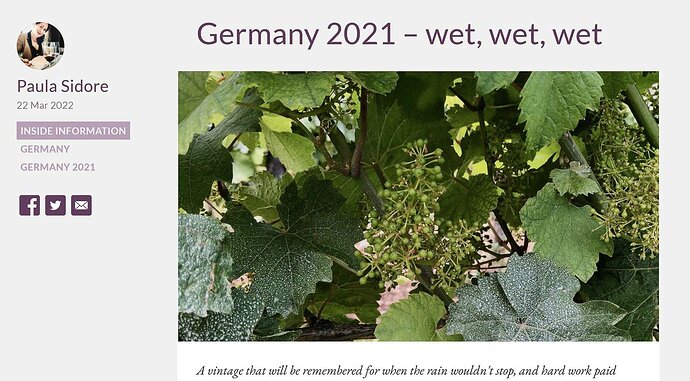
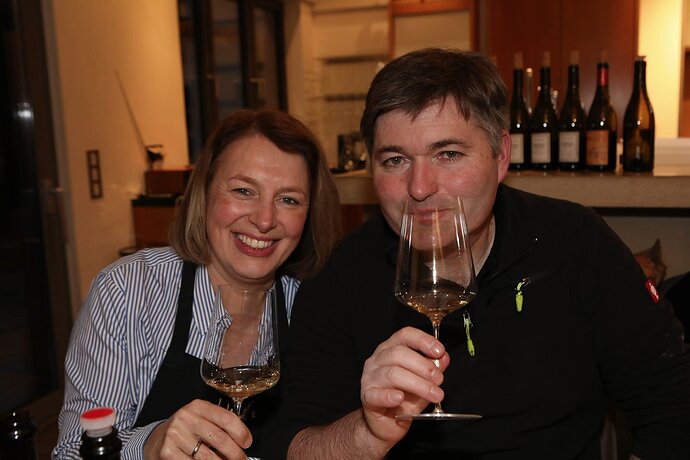

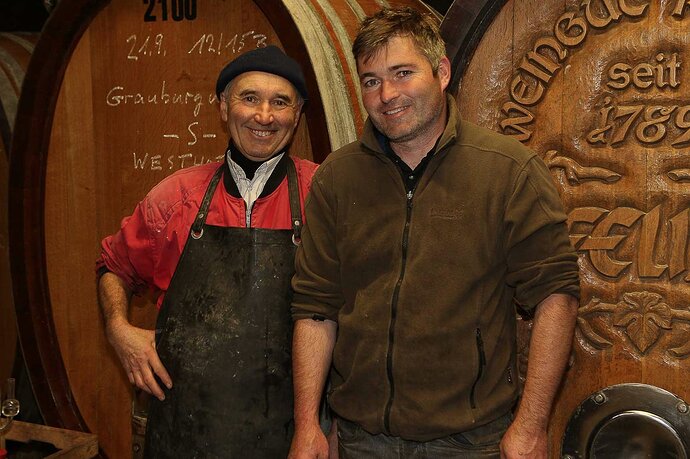
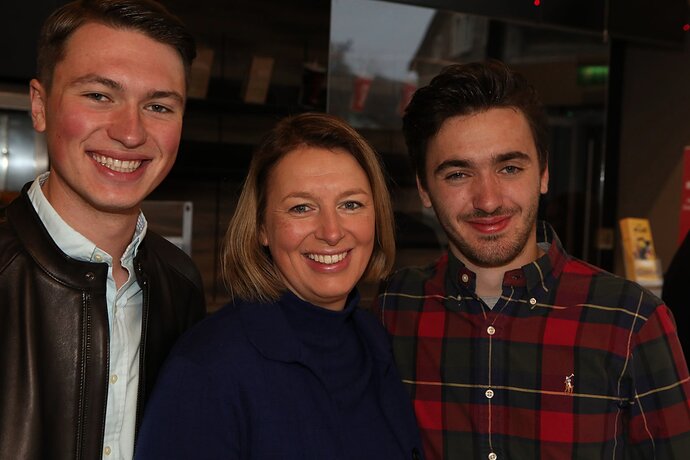


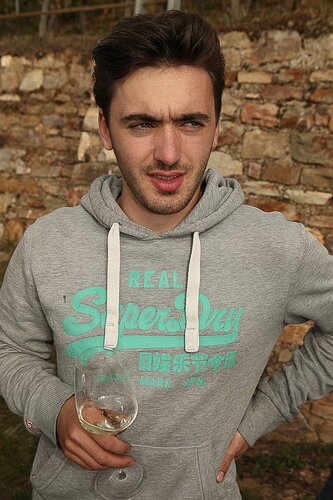

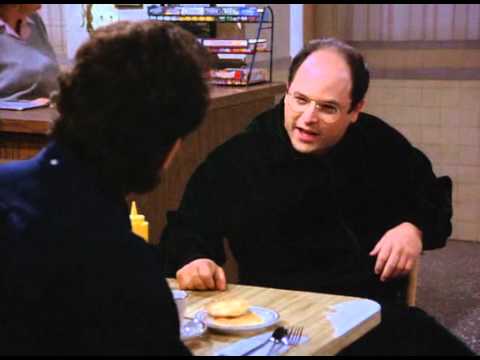
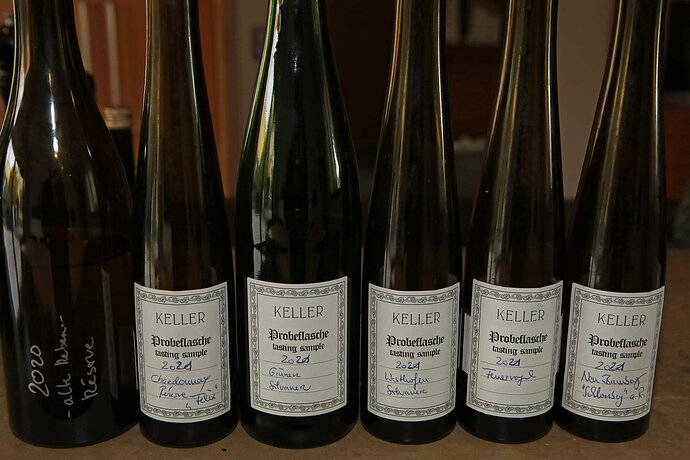
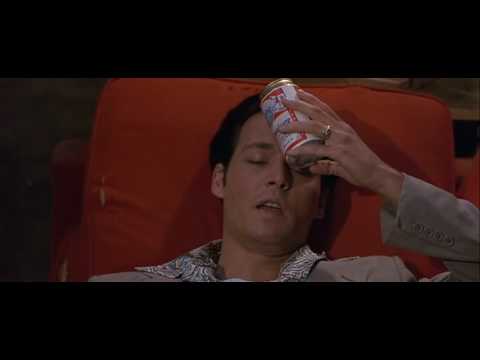
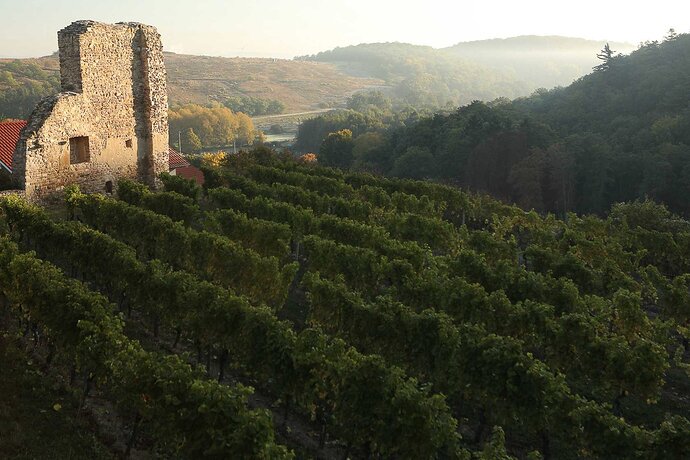


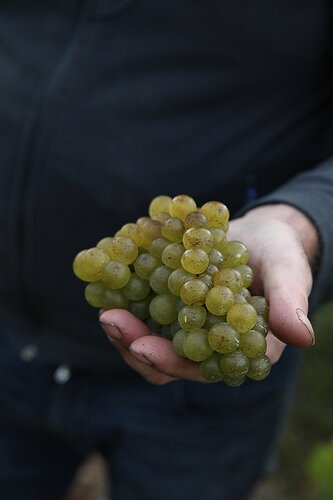

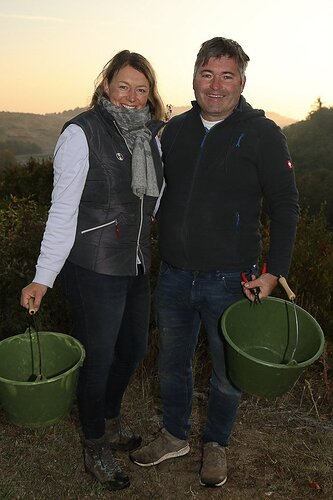
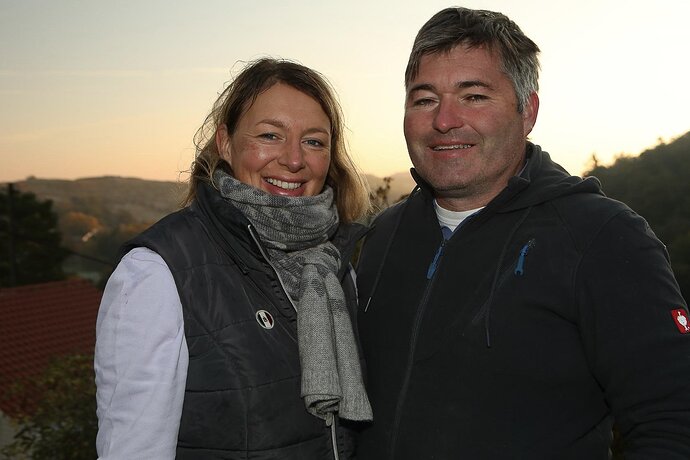
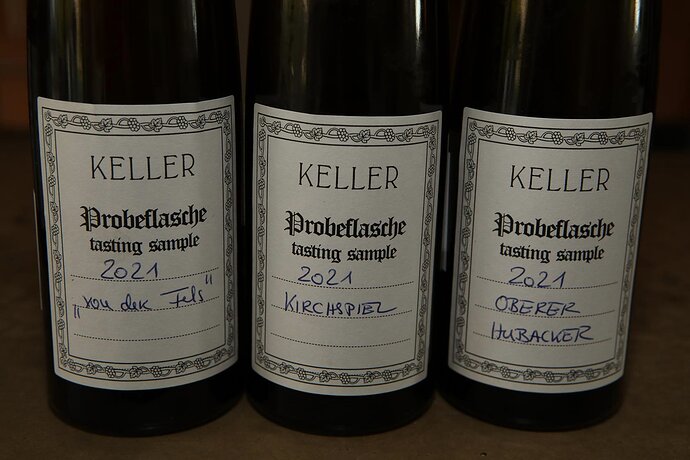

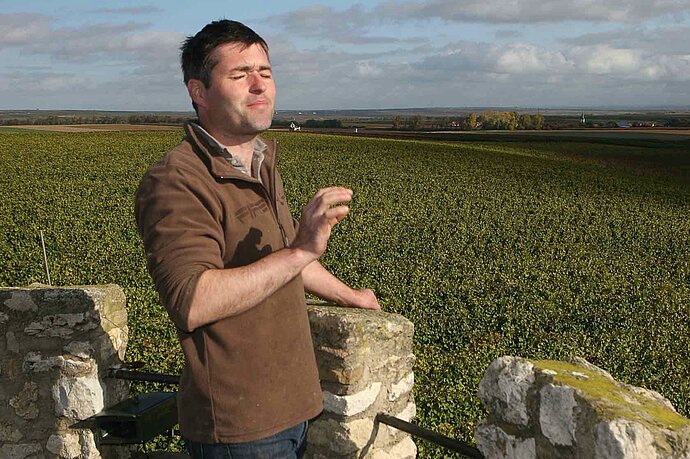
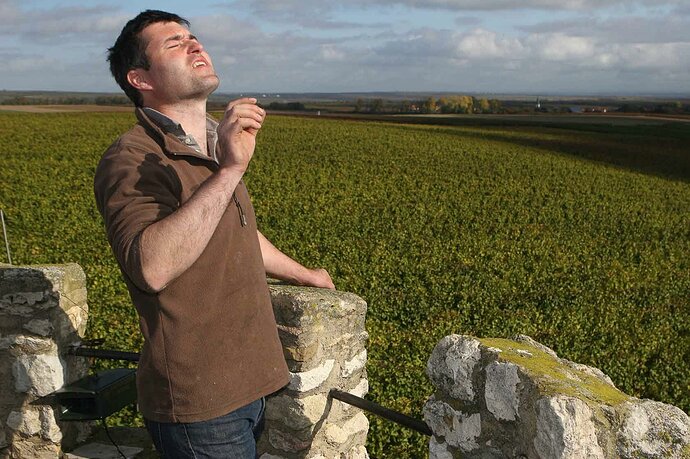
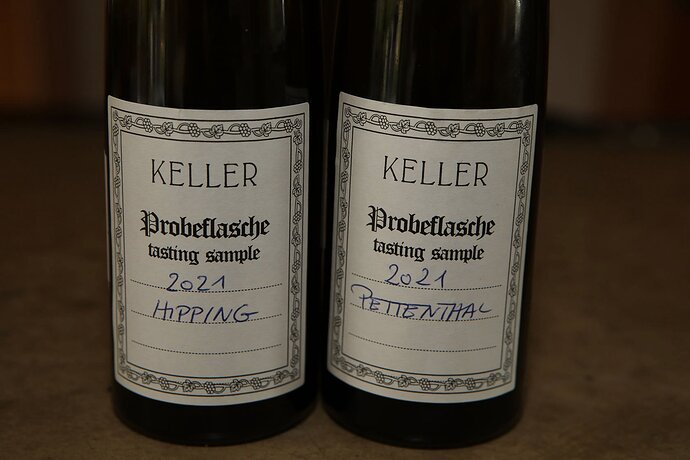
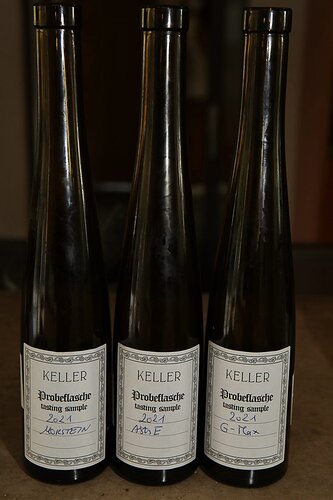
![Moulin Rouge OST [7] - Children of the Revolution](https://img.youtube.com/vi/CRs0x4qRDoI/maxresdefault.jpg)


